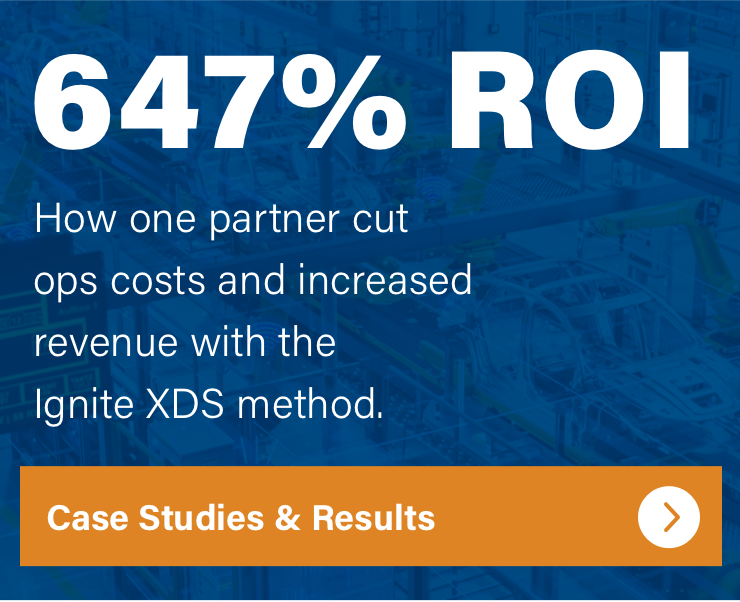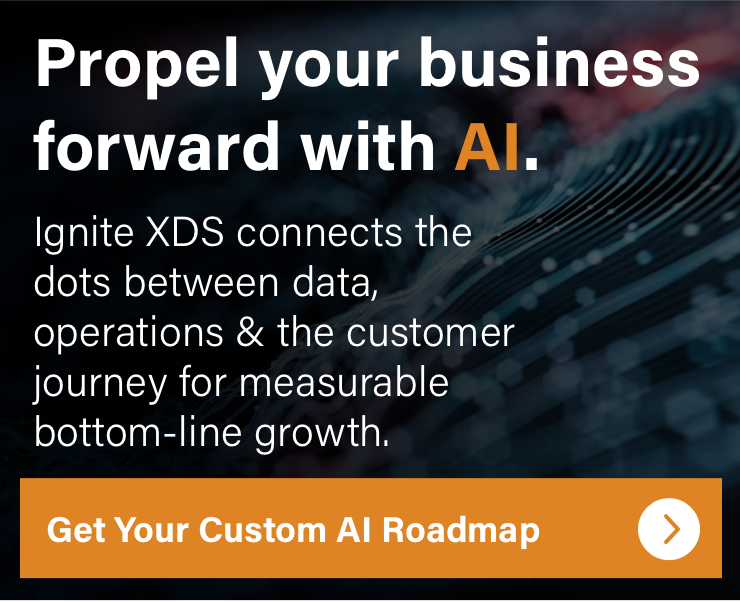
Building Your Business to Sell: Why the Smartest Exit Strategies Begin Years Before the Sale
Most entrepreneurs spend years building their businesses. But when it comes time to sell, many discover a painful truth: what they've built isn't worth what they thought it would be.
The problem isn't the business itself. It's that they've been running a company instead of building an asset.
There's a profound difference between the two and it's worth millions at exit.
After 35+ years working with hundreds of eight- and nine-figure companies, we've seen this story play out repeatedly. The businesses that command premium valuations aren't necessarily the ones with the highest revenue. They're the ones with the most transferable value. They're systems-driven, customer-centric, and strategically positioned for growth beyond the founder.
If you're an entrepreneur eyeing an exit in the next three to five years, this article will show you why starting now, not later, is the difference between a good outcome and a transformational one.
The Hidden Cost of "Business as Usual"
Here's what most mid-market business owners don't realize: buyers don't just purchase revenue. They purchase predictable, scalable systems that can generate revenue without you.
When private equity firms, strategic acquirers, or competitors evaluate your company, they're looking for three critical elements:
Transferable operations. Can the business function without the owner's daily involvement? Or will it crumble the moment you walk out the door?[4]
Growth infrastructure. Are there systems in place that enable predictable customer acquisition, retention, and expansion? Or is growth dependent on heroic individual efforts?
Clean financials with healthy margins. Buyers evaluate companies based on EBITDA multiples—and even small improvements in profitability can dramatically increase valuation.
According to research, most privately held companies in the lower middle market sell for 4-8 times adjusted EBITDA. But the businesses at the higher end of that range share common characteristics: they've built operational excellence, diversified revenue streams, and eliminated owner dependency.
The companies at the lower end? They're still running on the founder's instincts, tribal knowledge, and personal relationships. Those businesses don't sell for a premium. They sell at a discount—or they don't sell at all.
Why Most Businesses Aren't Buyer-Ready (And Don't Know It)
The brutal reality of business sales is this: 80% of executives believe their company delivers exceptional value. Only 8% of their customers agree.
This perception gap explains why so many business owners are shocked when they receive their first valuation. What they see as a thriving enterprise, buyers see as operational risk.
The gap manifests in predictable patterns:
Customer concentration risk. If a single client represents more than 15-20% of revenue, you're sitting on a ticking time bomb from a buyer's perspective. Lose that relationship, and valuation plummets.
Founder dependency. When the owner is the primary rainmaker, chief engineer, key relationship manager, and strategic visionary all rolled into one, the business isn't transferable.
Undocumented processes. If critical operations exist only in people's heads, buyers see chaos waiting to happen. They discount accordingly.
Weak digital infrastructure. In 2025, buyers expect modern technology stacks, data-driven decision-making, and AI-enabled operational efficiency. Companies still running on legacy systems or manual processes get valued like the outdated assets they are.
The good news? These aren't unfixable problems. But they require time, strategic focus, and disciplined execution to resolve—which is why the best exit strategies begin 18-36 months before the planned sale date.
The Ignite XDS Approach: Building Value Before You Sell
This is where the Ignite XDS methodology delivers transformational results.
We don't help companies "get ready" for sale by creating slide decks and hoping for the best. We engineer actual increases in enterprise value by systematically addressing the gaps between current state and buyer expectations.
Our clients achieve an average valuation multiplier of 1.8X in 37 months—not through accounting tricks or financial engineering, but through operational transformation that makes businesses genuinely more valuable.
Here's how the process works.
Step 1: The Discovery Process—Uncovering What Buyers Will See
Before you can fix what's broken, you need to know where the vulnerabilities lie. The Ignite XDS Discovery Process is a deep, systematic examination of your business across six critical dimensions:
Strategic Foundation. What's your actual value proposition? Not the marketing language on your website—the real reason customers choose you over competitors. Can you articulate it clearly? Can your team?
Customer Intelligence. Who are your best customers? Why do they buy? What's their journey from awareness to purchase to advocacy? Where are you losing opportunities in that process?
Market Position. How do you truly stack up against competitors? Not based on internal assumptions, but on hard market data and customer perception research.
Sales and Marketing Effectiveness. What's working? What's burning budget without generating return? Where are qualified opportunities falling through the cracks?
Operational Capability. Can you actually deliver on the promises your marketing makes? Or is there a gap between brand perception and customer experience that's eroding value?
Financial Health and Growth Trajectory. Are margins improving or deteriorating? Is growth sustainable or artificially propped up by unsustainable spending?
This isn't comfortable work. It's designed to challenge assumptions and expose uncomfortable truths. But it's precisely those truths that buyers will uncover during due diligence—except by then, you've lost negotiating leverage.
Discovery reveals immediately actionable opportunities to increase value. Sometimes that means fixing operational bottlenecks. Sometimes it means repositioning against competitors. Often it means building the systems that should have existed all along.
Step 2: Systematic Value Creation Through the P.M.P. Framework
Once gaps are identified, we implement solutions using our proprietary Position-Message-Process (P.M.P.) methodology:
Position Identification. We define your differentiated market position with precision. This isn't generic "we provide great service" positioning. It's a strategically defensible competitive stance backed by operational capability and customer validation.
For companies preparing to sell, positioning clarity is essential. Buyers pay premiums for businesses with clear, compelling value propositions that drive customer acquisition and retention.
Message Development. Once positioning is clear, we craft messaging that resonates emotionally with target customers while articulating rational benefits. This isn't marketing fluff—it's the strategic narrative that drives customer behavior and informs every touchpoint.
For exit-focused entrepreneurs, strong messaging demonstrates market sophistication and brand equity—both contributors to higher valuations.
Process Implementation. Here's where strategy becomes reality. We don't just deliver recommendations—we build and execute the systems that drive results.
This might include:
- Next-generation digital platforms with AI-powered customer engagement that operates 24/7
- Predictive sales intelligence systems that shorten sales cycles and improve close rates
- Automated customer journey optimization that increases lifetime value and reduces churn
- Financial performance dashboards that provide real-time visibility into key metrics buyers care about
- Standard operating procedures that eliminate owner dependency and create transferable value
The result? A business that operates more efficiently, grows more predictably, and delivers better customer experiences—all of which translate directly into higher valuation multiples.
Step 3: Documenting Value for Buyer Confidence
Buyers are skeptical by nature. They've seen too many businesses that look good on paper but fall apart under scrutiny.
That's why we help clients create comprehensive documentation that demonstrates operational maturity:
- Process documentation showing how critical functions operate independently of any individual
- Customer data proving retention rates, lifetime value, and acquisition costs
- Financial projections grounded in historical performance and realistic growth assumptions
- Technology roadmaps showing strategic infrastructure investments that enable scale
- Succession plans for key leadership roles that won't evaporate post-acquisition
We've even developed Confidential Information Memorandums (CIMs) for clients—the strategic documents that shape buyer perception and set valuation expectations from the first conversation.
A well-crafted CIM isn't just a sales brochure. It's a compelling narrative supported by hard data that positions your business as a premium asset worth fighting for.
Real-World Results: From Near-Insolvency to $45 Million Exit
The proof is in outcomes. Consider one manufacturing client, a fluid power equipment OEM on the verge of insolvency.
When they engaged Ignite XDS, they'd reduced workforce, cut remaining staff to forced four-day work weeks, and were staring at bankruptcy. The company had strong industry heritage but outdated branding that failed to reflect recent technology investments.
The transformation took 24 months:
We rebranded to reflect both history and innovation, positioning the company as a modern leader, not a legacy player.
We launched targeted campaigns reaching clearly defined audiences with messaging that resonated at the decision-maker level.
We transformed company culture so that every team member embodied the new value proposition.
Within two years, the company restored full-time work, rehired employees, and sold. The private owner walked away with $45 million.
That's the difference between treating an exit as a transaction versus treating it as a strategic outcome you engineer over time.
The M&A Partnership Advantage
We also work directly with M&A advisors who recognize that not every business is sale-ready when founders want to sell.
When sell-side clients hit roadblocks, lower-than-expected valuations, red flags around owner dependency, operational fragility, we step in to execute pre-exit growth infrastructure improvements that make businesses genuinely more attractive.
Our role isn't to replace M&A firms. It's to support their process by:
- Growing EBITDA through operational efficiency and revenue optimization
- Upgrading systems that make businesses transferable and scalable
- Addressing due diligence risk areas before buyers discover them
- Building documentation and processes that demonstrate maturity
The result? M&A advisors re-engage with clients who now present as stronger, cleaner assets commanding premium pricing and deals close faster with fewer complications.
The Three Systems Buyers Demand (That Most Mid-Market Firms Lack)
Whether you're planning an exit or simply want to run a better business, the same systems that drive valuation also drive freedom. Here are the three non-negotiables:
1. Simplification at Scale (FRAME)
Ironically, 10X growth is often simpler than 2X growth. Companies chasing incremental improvement keep layering complexity—more products, more processes, more people. It feels like progress, but it's just noise.
Businesses aiming for exponential growth are forced to focus. They identify the 20% of activities generating 80% of profit and eliminate everything else. That clarity creates scalable systems. And scalable systems command premium valuations.
2. Operational Standards That Scale (FLOOR)
Most business value lives in the mundane—consistent processes, clear handoffs, standardized customer experiences. Without these, companies rely on heroic individuals to keep things from breaking. That's not a business. It's a collection of dependencies.
Buyers pay premiums for businesses with documented, transferable operational standards—because those are the companies that can scale without the founder.
3. Leadership and Team Depth (CEILING)
If you're the rainmaker, visionary, problem-solver, and strategic thinker all in one, your business isn't sellable—it's you with a corporate structure around you.
Building leadership depth, documenting institutional knowledge, and creating succession plans aren't just smart management—they're value drivers that directly impact exit multiples.
Why Waiting is Costing You Millions
Here's the uncomfortable math: If your business currently generates $2 million in EBITDA and sells at a 5X multiple, you're looking at a $10 million enterprise value.
Now imagine implementing strategic improvements over 24 months that:
- Increase EBITDA to $2.5 million through operational efficiency
- Improve your multiple to 6.5X by demonstrating scalable systems and reduced risk
Suddenly you're looking at a $16.25 million valuation—a $6.25 million increase from the same business, just better positioned.
That's not theoretical. That's the documented result clients achieve when they treat exit preparation as strategic infrastructure, not last-minute polish.
The Path Forward: Starting Your Exit Strategy Today
If you're serious about maximizing exit value, here's what that journey looks like:
Months 0-3: Discovery and Strategic Planning We identify value gaps, competitive positioning opportunities, and operational improvements with the highest ROI. You receive a detailed Flight Plan outlining exactly what needs to happen to maximize valuation.
Months 4-12: Foundation Building We implement core systems—process documentation, technology infrastructure, customer intelligence platforms, financial dashboards. This is where transferable value starts taking shape.
Months 13-24: Growth Acceleration With foundations in place, we focus on revenue growth, margin improvement, and market positioning. This is where EBITDA multiples expand and buyer interest intensifies.
Months 25-36: Exit Preparation and Execution We work alongside your M&A advisor (or help you find one) to position your business for maximum competitive tension among buyers. Documentation is complete. Systems are proven. Valuation is maximized.
The result? You enter sale conversations from a position of strength, with a business that commands premium pricing because it deserves it.
The Choice Is Yours
You can keep running your business the way you always have—reactive, founder-dependent, operationally fragile. You'll eventually sell. But you'll sell for less than you should, to buyers who'll discount every risk they find.
Or you can start building an asset buyers will compete to acquire.
The businesses that command transformational valuations aren't lucky. They're strategic. They've invested time building the systems, processes, and infrastructure that make growth predictable and operations transferable.
Your data is talking. AI helps you listen and act.
Every transaction, customer interaction, and operational process in your business generates signals about value creation and risk. The question is whether you're extracting that intelligence and using it to engineer higher valuation—or whether you're leaving millions on the table.
At Ignite XDS, we've spent 35+ years perfecting the methodology that turns good businesses into premium assets. We work exclusively with entrepreneurs who understand that exceptional outcomes require exceptional preparation.
If you're considering an exit in the next 3-5 years, the work should begin today. Not with lawyers and bankers—they come later. It begins with honest assessment, strategic planning, and disciplined execution of the systems that drive enterprise value.
Schedule a 15-minute fit call and discover what your business could be worth with the right preparation.
The difference between a good exit and a great one isn't luck. It's preparation. And preparation starts now.


